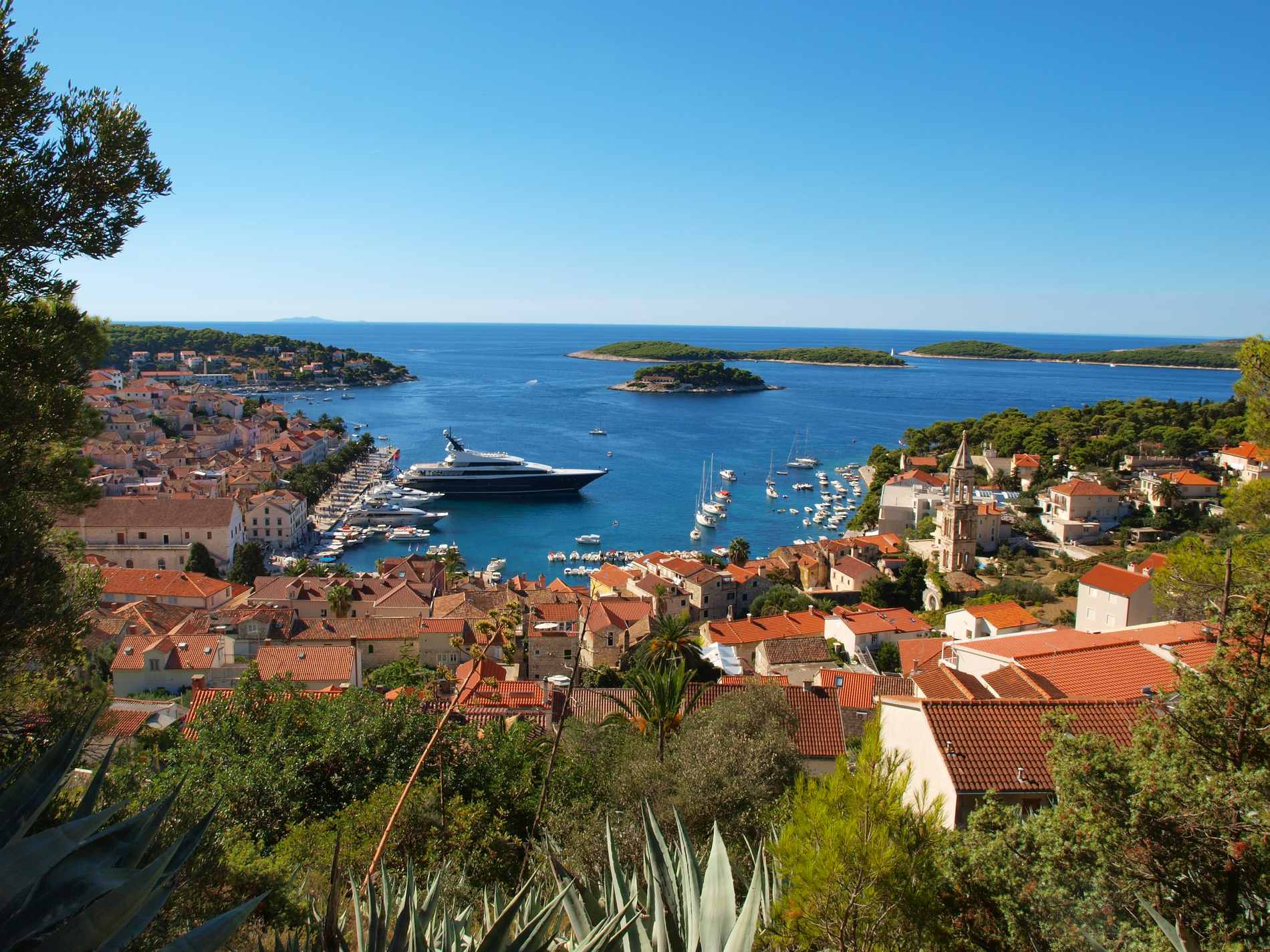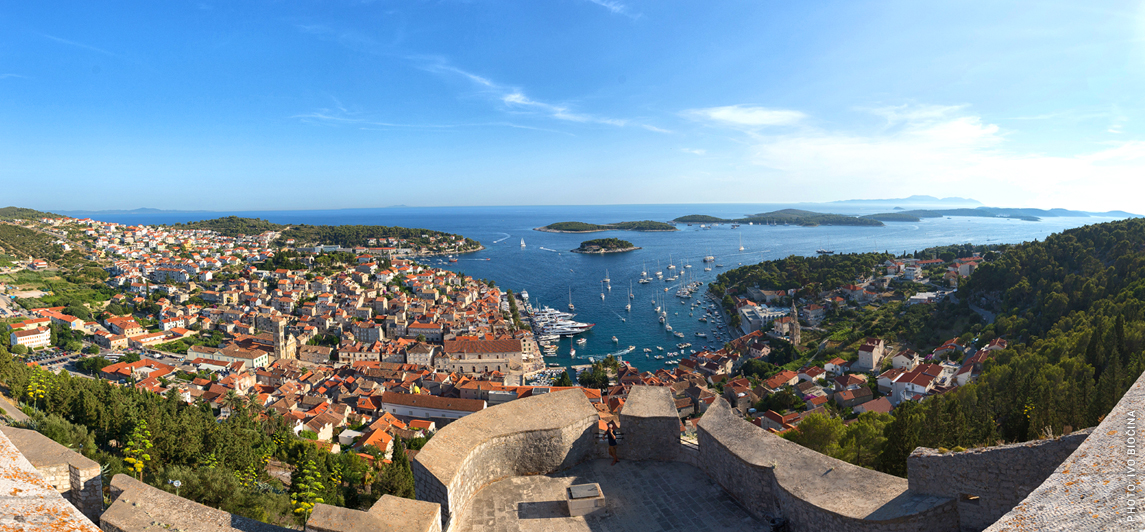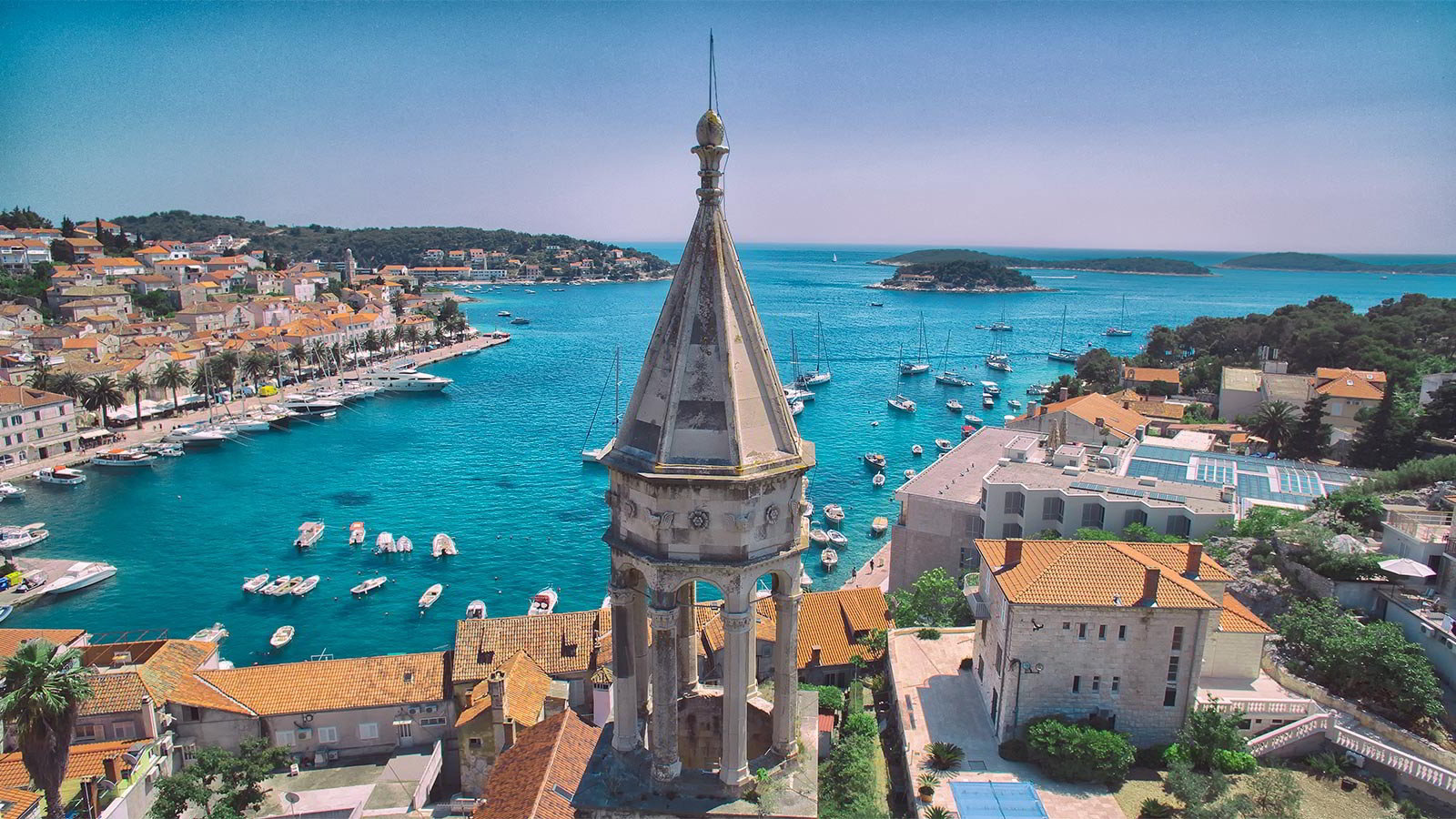Hvar has been welcoming visitors for millennia. On the sailing route of both trade and pilgrimages, Hvar has always been a strategic point of interest, from modern sailing tourists to previous invading armies. Its history is as fascinating as the island itself.
The earliest signs of civilisation on Hvar date back to Neolithic times and the so-called Hvar Culture of 3500 – 2500 BC. These estimates by archaeologists are based on artifacts and painted pottery in the caves of Grapceva and Markova Spilija, both of which can be visited today. Examples of the finds are displayed in the excellent Heritage Museum in Hvar Town.

Given its prominent position on a busy sea route, it is perhaps surprising that the island was not settled earlier than 384 BC, when the Ancient Greeks founded the settlement of Pharos (modern-day Stari Grad). The Ionian Greeks, the Parans, were in search of a base for military and trade expansion and the deep bay at Pharos offered the best protection. While there is some evidence of Greek heritage in present-day Stari Grad, the most striking remnant is the UNESCO-protected Stari Grad Plain, a superbly preserved 80-hectare agricultural colony still in use today. Those 8 hectares of land became what is today known as HORA or AGER (“Ager Pharensis” in Roman times, or “Chora Pharou” at the time of the Greeks), and is the largest of all such plains on the Adriatic islands.
With the decline of the Syracuse Empire, Pharos enjoyed a brief period of local rule under Demetrius of Hvar, who kept the Romans at bay until they finally smashed the walls of Pharos in 229 BC. The Romans used the island as a strategic and logistical base, keeping their boats in the protected bays of the Scedro and the Pakleni Islands. Roman holiday houses sprang up in the bays close to fresh water, most notably in Hvar, Stari Grad and Jelsa. Archaeological finds confirm that the islanders were engaged in an existence of wine growing, fishing and trade.
Austrian rule was stable and brought prosperity, most notably in the development of health tourism on the island, with the founding of the Hvar Hygienic Society in 1868. The oldest meteorological station in Croatia was also established in 1858. Austrian rule also brought infrastructure improvements to the island, with all the ports rebuilt, new lighthouses, malaria-infested marshland reclaimed, and a road connecting Jelsa to Pitve and Vrisnik in 1907. The old road from Jelsa to Hvar did not appear until the 1930s, and previous travel options were ship or 8-hour donkey ride.

Hvar was named as one of the top 10 most beautiful islands in the world by readers of Conde Nast back in 1997. Major investments in the town’s hotels and the upgrading of cultural treasures such as the Arsenal and the oldest public theatre in Europe has meant that Hvar is once more a major luxury tourism destination on the Croatian coast.
Hvar, the cradle of Croatian tourism, celebrated 150th anniversary of tourism.
Hvar’s geographic position, its favourable climate, clear sea and rich cultural heritage favoured the development of the organised tourism in the distant 1868, when the Hvar Hygienic Society was founded. It was opening the gate to make it the most important branch of the town economy and bringing Hvar to the fame of a worldwide known tourist destination visited by most demanding and famous visitors from all over the world. The 150th anniversary of the oldest organised tourism in Europe was celebrated in some style in 2018.
Hvar Town
One of the jewels of Croatian tourism, Hvar Town is the capital and largest settlement of the island of the same name. Its rich Venetian architecture harks back to its glorious cultural past, while people watching on the largest square in all Dalmatia is a very popular activity today. The rich cultural heritage which includes the oldest public theatre in Europe continues today with the Hvar Summer Festival, whose locations include the Franciscan Monastery, Veneranda, the Arsenal and theatre, and Hanibal Lucic garden. Don’t forget to climb to the Spanish Fortress for fabulous views of the town and Pakleni Islands.
Hvar’s iconic waterfront, or riva, is among the most exclusive on the Adriatic, where backpackers and superyachts mingle in this most egalitarian of towns. Don’t miss the daily water taxis to the gorgeous Pakleni islands, which offer a range of activities, from beaches and nightlife, sailing and kayaking, to art galleries and fine dining.
Indulge in the restaurants and wine bars of Hvar Town, famed for their excellence in preparing local specialties such as Hvarska Gregada, as well as a wider the Mediterranean and international menu.

How to reach Hvar
Boat
Hvar is connected with the mainland by boat lines:
Split – Stari Grad; Drvenik – Sućuraj; Split – Hvar.
Catamaran connection: Split – Hvar/Hvar – Split, regularly.
Catamaran connection: Split – Jelsa/Jelsa – Split, daily.
Catamaran connection: Split Airport – Stari Grad/Stari Grad – Split, regularly (until September 15).
Ferry connection: Split – Stari Grad/Stari Grad – Split, daily, regularly.
Ferry connection: Drvenik – Sućuraj/Sućuraj – Drvenik, daily, regularly.
Hvar is connected to the mainland and other islands through four harbors, only two of which allow for cars. The main car ferry terminal is near Stari Grad, a 20-minute drive from Hvar Town, and there are regular ferries throughout the year from Split, as well as from Italy during the peak season. On the eastern tip of the island, Sućuraj has a regular 30-minute crossing to Drvenik, useful if you are coming from Dubrovnik and the south. The onward drive to Hvar Town is about 90 minutes.
Hvar Town is well served with regular catamarans to and from Split, as well as onward boats to Korčula daily, and Vis once a week. The town of Jelsa has a daily catamaran from Split via Bol. In 2019, a new private catamaran service was introduced, connecting Split Airport to Stari Grad, with a one-hour transfer.
Plane
Hvar has a small airfield in the UNESCO Stari Grad Plain. While there are no scheduled flights, private planes up to six passengers can land there. There is currently no seaplane service to the island.
Find your route to island Hvar here.
Find your property on island Hvar here.





